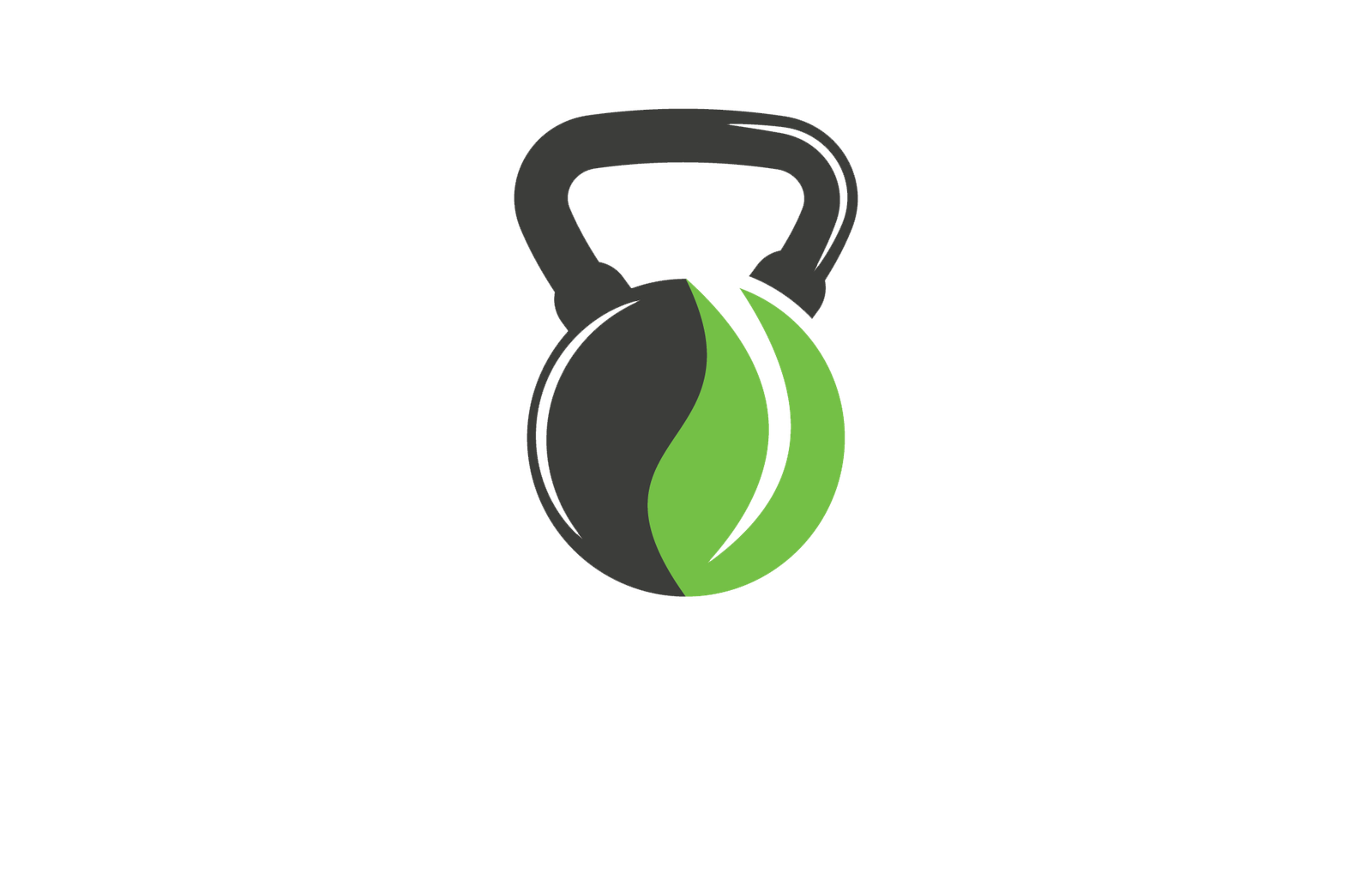Don't miss our holiday offer - 20% OFF!

HIIT Workouts for Effective Weight Loss
Witness the transformative power of HIIT workouts, a potent weight loss tool that ignites your metabolism and leaves you craving more.
We've finally found a workout style that checks all the boxes for effective weight loss: HIIT, or High-Intensity Interval Training, which has been proven to boost metabolism, increase energy levels, and torch calories both during and after exercise. By incorporating HIIT into our fitness routine, we can expect significant weight loss results, improved cardiovascular fitness, and reduced fatigue. With its ability to keep our metabolism revved up long after exercise is completed, HIIT is the perfect solution for those looking to shed those extra pounds. Now, let's plunge into the world of HIIT and discover the secrets to tapping our weight loss potential.
Key Takeaways
- HIIT workouts are highly effective for weight loss, boosting metabolism, and keeping it revved up long after exercise is completed.
- HIIT reduces fatigue, a common obstacle to consistent exercise, and improves energy levels, leading to significant weight loss results.
- Incorporating strength training into HIIT workouts helps build lean muscle, which boosts metabolism and enhances athletic performance, leading to effective weight loss.
- Cardio exercises play a crucial role in HIIT, increasing aerobic endurance, leading to significant calorie burn, and contributing to effective weight loss.
- A proper warm-up is vital before starting a HIIT workout to prepare the body for high-intensity exercise, minimize the risk of injury, and ensure a safe and effective workout.
What Is HIIT Workout
We've all heard the buzz surrounding HIIT workouts, but what exactly does HIIT stand for, and how does this style of exercise differ from traditional workouts? HIIT stands for High-Intensity Interval Training, a style of workout that involves short bursts of high-intensity exercise followed by brief periods of rest or low-intensity exercise.
In terms of HIIT history, this style of exercise has been around for decades, with early adopters including athletes and military personnel. However, it wasn't until the 2010s that HIIT workouts started to gain mainstream popularity, as the fitness industry began to shift towards more efficient and effective forms of exercise. This shift marked a significant evolution in the fitness industry, as people began to move away from traditional, long-duration cardio sessions and towards more time-efficient, high-intensity workouts. Today, HIIT workouts are a staple in many gyms and fitness studios, offering a fun and challenging way to improve cardiovascular fitness and burn calories.
Benefits of HIIT for Weight Loss
Performing HIIT workouts is a highly effective way to torch calories and shed pounds, thanks to its unique ability to boost our metabolism and keep it revved up long after we've finished exercising. This metabolic boost is essential for weight loss, as it allows us to burn more calories at rest, leading to increased fat loss. In addition, HIIT workouts are renowned for their ability to reduce fatigue, a common obstacle to consistent exercise. By incorporating HIIT into our routine, we can expect to experience improved energy levels, making it easier to stick to our workout regimen. Furthermore, HIIT's intense nature increases our excess post-exercise oxygen consumption (EPOC), which means we continue to burn calories at an elevated rate even after our workout is complete. This EPOC effect can last for several hours, further amplifying the calorie-torching benefits of HIIT. By incorporating HIIT workouts into our fitness routine, we can expect to see significant weight loss results, thanks to the combined benefits of a metabolic boost and fatigue reduction.
How HIIT Burns Belly Fat
HIIT workouts effectively target belly fat by creating an oxygen debt in the body, which forces our bodies to burn stored fat for energy, particularly in the midsection. This is because HIIT exercises engage our abdominal muscles, strengthening our core and improving our overall athletic performance. As we perform these intense workouts, our bodies undergo a series of physiological changes that ultimately lead to a reduction in visceral fat.
| Physiological Change | Effect on Belly Fat | Benefits |
|---|---|---|
| Increased Insulin Sensitivity | Improved glucose uptake, reduced insulin resistance | Enhanced fat burning |
| Hormonal Response | Increased epinephrine, norepinephrine, and cortisol | Boosted metabolic rate |
| Inflammation Reduction | Decreased inflammation, improved immune function | Enhanced fat loss |
| Metabolic Rate Increase | Increased energy expenditure, improved fat oxidation | Accelerated weight loss |
Importance of Warm-up Exercises
As we get ready to tackle a HIIT workout, we need to remember that a proper warm-up is vital. We're not just talking about a casual jog or some light stretching – we're talking about a deliberate, focused effort to prepare our bodies for the high-intensity exercise that's to come. By warming up effectively, we can guarantee we're ready to give it our all while minimizing the risk of injury.
Prepare for High Intensity
Before we dive into the intense world of high-intensity interval training, we need to prep our bodies with a dynamic warm-up to prevent injuries and get the most out of our workouts. As we prepare for high intensity, we're not just getting our bodies ready, we're also mentally preparing ourselves for the challenge ahead. Mental preparation is vital in HIIT workouts, as it helps us push through the tough intervals and stay motivated. We need to psyche ourselves up, focus on our goals, and remind ourselves that we're capable of achieving them.
Physical readiness is also essential. A good warm-up gets our hearts rate up, increases blood flow to our muscles, and prepares our joints for the high-impact movements that come with HIIT. We're not just talking about a casual jog on the treadmill; we need a dynamic warm-up that includes movements like leg swings, arm circles, and high knees. By combining mental preparation with physical readiness, we'll be ready to tackle even the toughest HIIT workouts and reap the rewards of effective weight loss.
Prevent Injury Risks
By incorporating a dynamic warm-up into our pre-workout routine, we substantially reduce the risk of injury and set ourselves up for a safe and effective HIIT session. A proper warm-up is essential for injury prevention, as it prepares our muscles for the intense exercise that's about to come. Without it, we're more likely to experience strains, pulls, and other injuries that can leave us sidelined for weeks.
A good warm-up should include exercises that mimic the movements we'll be doing during our HIIT workout. This gets our heart rate up, increases blood flow to our muscles, and activates our nervous system. It's also essential for safe landings, as it helps our muscles and tendons absorb the impact of explosive movements. By taking the time to warm up properly, we can guarantee that we're performing at our best while minimizing the risk of injury. It's a small investment of time that pays big dividends in respect to safety and effectiveness. So, let's make sure to prioritize our warm-up and set ourselves up for a successful and injury-free HIIT session.
Sample HIIT Workout Routines
We'll kick off our HIIT journey with a selection of workout routines that cater to different fitness levels and goals. Whether you're a beginner or an experienced athlete, our programs are designed to accommodate your needs. Our sample HIIT workout routines are designed to provide workout variety, helping you achieve your fitness goals.
Beginner Blast | 20 minutes | Low-Moderate |
Cardio Crusher | 30 minutes | High |
Strength Sprint | 25 minutes | Moderate-High |
Fat Burner | 20 minutes | Moderate |
Endurance Express | 35 minutes | High |
These routines are tailored to help you achieve your fitness goals, whether it's weight loss, improved cardiovascular health, or increased strength. Remember to always warm up before starting any workout and cool down afterwards to prevent injury. By incorporating HIIT into your fitness routine, you'll be on your way to achieving your fitness goals in no time!
Incorporating Strength Training
As we incorporate strength training into our HIIT workouts, we're not just looking to build endurance – we're also aiming to build lean muscle. To do this, we need to focus on progressive overload methods that challenge our muscles and promote growth. By combining HIIT's intense cardio with targeted strength exercises, we can create a powerful workout that yields impressive results.
Building Lean Muscle
Incorporating strength training into our HIIT workouts helps us build lean muscle, which not only boosts our metabolism but also enhances overall athletic performance. As we focus on building lean muscle, we need to prioritize muscle recovery. This is vital because intense strength training can cause micro-tears in our muscle fibers, leading to soreness and fatigue. To aid in muscle recovery, we should provide adequate rest, nutrition, and stretching. Additionally, we must be mindful of muscle imbalance, where some muscles become stronger than others, leading to poor posture, injury, or decreased performance. To avoid muscle imbalance, we should focus on exercises that target multiple muscle groups simultaneously, such as squats, lunges, and deadlifts. These compound exercises help maintain muscle balance and overall strength. By incorporating strength training into our HIIT workouts and prioritizing muscle recovery and balance, we can build lean muscle efficiently and effectively, leading to enhanced athletic performance and weight loss.
Progressive Overload Methods
By gradually increasing weight, reps, or sets over time, we can challenge our muscles to adapt to progressive overload, a crucial component of strength training that stimulates muscle growth and boosts our HIIT workouts. This method helps us break through plateaus and avoid stagnation, as our muscles are constantly forced to adapt to new demands. One effective way to apply progressive overload is through load variation, where we switch between heavy and light weights to keep our muscles guessing. This muscle confusion technique prevents our bodies from adapting to a single routine, ensuring continued progress and growth. For instance, we can alternate between high-intensity, low-rep exercises one day and lower-intensity, higher-rep exercises the next. By incorporating progressive overload methods into our strength training routine, we can maximize our HIIT workout results and achieve our weight loss goals more efficiently.
Role of Cardio in HIIT
During intense HIIT workouts, cardio exercises play a crucial role in boosting our metabolism, shredding fat, and improving overall cardiovascular health. We've come to realize that incorporating cardio into our HIIT routine is essential for achieving our weight loss goals. The Cardio Benefits are undeniable – it increases our aerobic endurance, allowing us to push ourselves harder and longer during each session. This, in turn, leads to a significant calorie burn, even after our workout is complete. By incorporating cardio exercises like sprints, burpees, or jump squats into our HIIT routine, we can expect to see a significant improvement in our overall cardiovascular health. Our heart rate increases, and our lungs become more efficient at delivering oxygen to our muscles. As we continue to challenge ourselves with high-intensity cardio exercises, we'll notice a significant improvement in our endurance, allowing us to tackle even the toughest workouts with confidence. By combining cardio with strength training, we can take our fitness journey to the next level and achieve the weight loss results we've always desired.
Effective HIIT Timing and Rest
We time our HIIT workouts to precision, recognizing that essential intervals of intense exercise and strategic rest periods are necessary to maximizing our calorie burn and avoiding plateaus. Effective timing strategies are essential to achieving peak recovery and maximizing the benefits of our workouts. We've found that incorporating rest periods between high-intensity intervals allows our bodies to recover and adapt, leading to increased fat loss and improved overall fitness.
Our timing strategies involve alternating between 20-30 seconds of all-out effort and 1-2 minutes of active recovery. This allows us to push ourselves to the limit while still allowing for ideal recovery. We've also experimented with different rest periods, finding that longer breaks can actually hinder progress and lead to decreased motivation. By fine-tuning our timing strategies, we're able to maximize our calorie burn and avoid plateaus. By incorporating adequate recovery periods, we're able to come back stronger and more resilient, ready to take on the next intense interval.
Maximizing Calorie Burn With HIIT
As we explore maximizing calorie burn with HIIT, we'll focus on the key factors that make a significant impact. We'll examine how to boost caloric expenditure through strategic exercise intervals, and how intensive exercise intervals can supercharge our calorie burn. By optimizing these elements, we can tap into the full fat-burning potential of HIIT workouts.
Caloric Expenditure Boost
By incorporating HIIT workouts into our fitness routines, we can substantially boost our caloric expenditure both during and after exercise. This increased caloric expenditure is a result of the intense intervals that characterize HIIT workouts, which push our bodies to work harder and burn more calories. In fact, research has shown that HIIT workouts can lead to increased energy deficits, which are essential for weight loss.
| Workout Type | Caloric Expenditure (per hour) | Metabolic Rate Increase |
|---|---|---|
| Steady-state cardio | 400-600 calories | 10-15% |
| HIIT workout | 600-800 calories | 20-25% |
| Resistance training | 200-400 calories | 5-10% |
| HIIT with resistance training | 800-1000 calories | 25-30% |
As we can see from the table above, HIIT workouts notably outperform other types of exercise when it comes to caloric expenditure. Additionally, HIIT workouts have been shown to increase our resting metabolic rate, which means we continue to burn more calories even after the workout is complete. This increased metabolic rate can last for several hours, making HIIT an effective way to boost our caloric expenditure and support weight loss.
Intensive Exercise Intervals
When designing a HIIT workout, incorporating intensive exercise intervals is key to maximizing calorie burn, as these short bursts of all-out effort are what drive up our energy expenditure and ignite our metabolism. By pushing ourselves to the limit for short periods, we're able to torch calories at an incredible rate, making HIIT a highly effective way to lose weight.
One common exercise myth is that we need to spend hours at the gym to see results, but HIIT workouts prove that's simply not the case. In fact, just 15-20 minutes of high-intensity exercise can be more effective than an hour of steady-state cardio. This is why HIIT has become a staple of modern fitness trends, with many gyms and fitness studios incorporating HIIT workouts into their programs.
To get the most out of our HIIT workouts, we need to be willing to push ourselves to the limit. This means giving it our all during those intense intervals, and not holding back. By doing so, we'll be able to maximize our calorie burn and take our fitness to the next level.
Common HIIT Workout Mistakes
We often sabotage our own HIIT workouts with mistakes that can hinder progress, increase injury risk, and diminish overall results. As we venture into the world of high-intensity interval training, recognizing and avoiding common pitfalls is crucial to our fitness journey.
Common HIIT workout mistakes to watch out for:
- Overtraining Risks: Pushing ourselves too hard, too fast, and too frequently can lead to burnout, fatigue, and increased risk of injury.
- Poor Form: Neglecting proper form and technique can put excessive stress on our joints and muscles, leading to injuries and ineffective workouts.
- Inadequate Warm-Ups and Cool-Downs: Skipping or rushing through warm-ups and cool-downs can increase the risk of injury and reduce the effectiveness of our workouts.
- Insufficient Recovery Time: Failing to allow our bodies sufficient time to recover between workouts can hinder progress, increase fatigue, and lead to plateaus.
Creating a HIIT Workout Schedule
Crafting a well-structured HIIT workout schedule is essential to maximizing our fitness gains and avoiding the pitfalls of overtraining, as a thoughtfully planned routine helps us strike a balance between intensity and recovery. When creating our schedule, we need to take into account our fitness goals and verify that our workout routine is aligned with them. This means identifying the specific areas we want to improve, whether it's increasing endurance, boosting metabolism, or building strength.
To keep our workouts engaging and prevent plateaus, we should incorporate workout variety into our schedule. This can be achieved by alternating between different HIIT protocols, such as sprint intervals, Tabata, or EMOM (Every Minute on the Minute). We can also mix and match different exercises, such as strength training, cardio, or plyometric exercises, to keep our bodies guessing. By varying our workouts, we'll not only avoid boredom but also continue to challenge ourselves and see progressive results. By being intentional with our workout schedule, we'll be able to achieve our fitness goals more efficiently and effectively.
HIIT Workout for Different Fitness
Whether you're a fitness newbie or a seasoned athlete, HIIT workouts can be adapted to suit various fitness levels and goals, allowing us to tailor our exercise routine to our individual needs and abilities. As we set out on our fitness journeys, recognize that HIIT workouts can be modified to accommodate different fitness levels. This adaptability makes HIIT an excellent option for individuals with varying fitness goals and requirements.
HIIT workouts can be adapted for different fitness levels in the following ways:
- Beginners: Start with shorter intervals (20-30 seconds) and gradually increase duration as fitness level improves.
- Intermediate: Incorporate more intense exercises, such as burpees or jump squats, and increase interval duration (30-60 seconds).
- Advanced: Incorporate complex exercises, such as plyometric exercises, and increase interval duration (60-90 seconds).
- Workout Buddies: Partner with a workout buddy to increase motivation and accountability, regardless of fitness level.
Tracking Progress With HIIT
As we adapt HIIT workouts to our individual fitness levels, it's equally important to track our progress to stay motivated and adjust our routines accordingly. Tracking progress helps us identify what's working and what needs tweaking, ensuring we're on the right path to achieving our weight loss goals.
To effectively track our progress, we need to focus on key accountability metrics. These metrics serve as a benchmark to measure our performance and provide valuable insights for improvement. Here's a breakdown of essential metrics to track:
| Metric | Description | Frequency |
|---|---|---|
| Weight | Monitor changes in body weight | Weekly |
| Body Fat % | Track changes in body composition | Bi-Weekly |
| Workout Time | Measure improvement in workout efficiency | Daily |
Digital tracking tools, such as mobile apps or fitness trackers, make it easy to monitor our progress and stay accountable. By regularly tracking our progress, we can make data-driven decisions to refine our HIIT workouts and accelerate our weight loss journey.
Frequently Asked Questions
Can I Do HIIT Workouts With a Prior Injury or Health Condition?
"We can still exercise safely with prior injuries or health conditions by modifying exercises to accommodate our limitations or opting for safe alternatives, ensuring a healthy and effective workout."
How Many Days a Week Should I Do HIIT Workouts for Optimal Results?
We aim to do HIIT workouts 3-4 times a week, allowing for recovery days in between. Consistency matters, so we prioritize progressive overload to avoid plateaus, ensuring peak results from our regular sessions.
Can I Do HIIT Workouts at Home Without Any Special Equipment?
"We're not stuck in a gym to get fit! We can ditch the membership fees and do HIIT workouts at home, leveraging home convenience and space optimization to squeeze in a sweaty session anytime."
Will HIIT Workouts Help Me Build Muscle or Just Lose Weight?
Researchers have found that HIIT can be effective for fat loss, but will it help us build muscle too? The answer is yes, as it incorporates muscle gain strategies, like explosive movements, to build lean mass while burning fat with fat burning secrets like EPOC.
Can I Combine HIIT Workouts With Other Exercise Routines for Better Results?
Can we really put all our eggs in one fitness basket? We think not! We combine HIIT with strength training, yoga, or Pilates for a well-rounded routine, using cross training and periodization to avoid plateaus and boost results.
Conclusion
As we wrap up our exploration of HIIT workouts for effective weight loss, we're left with a powerful tool in our fitness arsenal. According to a study published in the Journal of Obesity, HIIT workouts have been shown to burn up to 25% more calories than traditional cardio exercises. By incorporating HIIT into our routine, we can torch fat, boost metabolism, and achieve our weight loss goals. With consistency and dedication, the results will speak for themselves.



